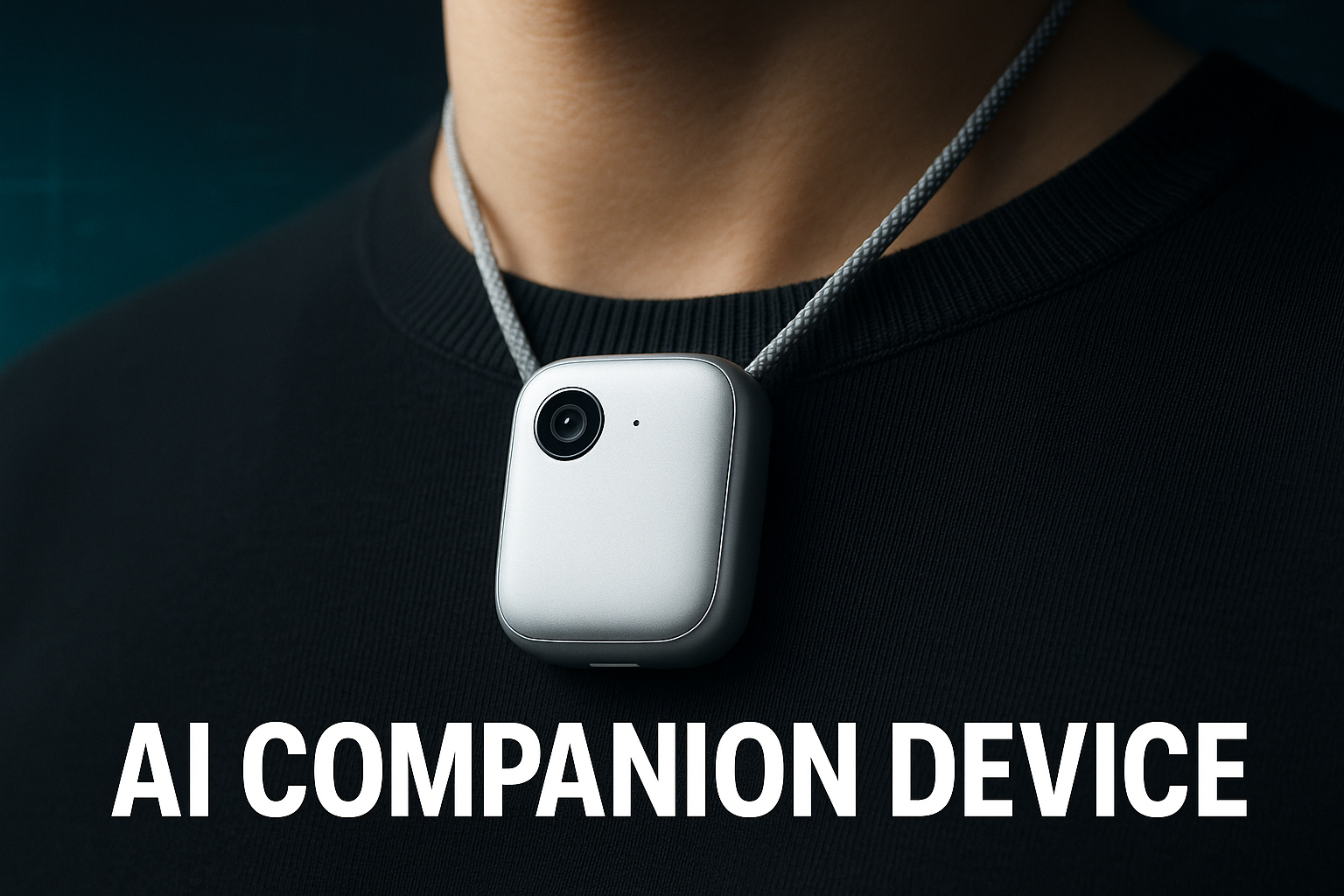Sam Altman just revealed OpenAI's most ambitious hardware project yet: an AI companion device that will fundamentally change how we interact with artificial intelligence. In collaboration with legendary Apple designer Jony Ive, OpenAI plans to produce 100 million AI companions by 2027—wearable devices that are always watching, always listening, and always learning from your environment.
This announcement has sparked intense debate across the tech industry. Is this the future of computing, finally freeing us from our smartphone addiction? Or is it a privacy nightmare that will make Google Glass look tame by comparison?
The Vision: Your AI Companion
According to reports from The Wall Street Journal, Sam Altman presented the device concept to OpenAI employees in a confidential meeting, describing a wearable AI companion that represents a radical departure from traditional computing devices (Metz and Griffith, 2025). The device is designed to be worn around your neck like a pendant, featuring cameras and microphones but no screen.
The core promise is compelling: instead of constantly pulling out your phone to check notifications, send messages, or look up information, your AI companion handles everything through natural conversation. It sees what you see, hears what you hear, and provides real-time assistance throughout your day.
Key Features
- Wearable Design: Pendant-style device worn around the neck
- Always-On Sensors: Cameras and microphones continuously monitoring your environment
- Screenless Interface: All interactions through voice and audio feedback
- Smartphone Integration: Connects to your phone and computer for data processing
- Contextual AI: Learns from every conversation, every meeting, every moment
The Jony Ive Connection
The collaboration with Jony Ive, the design genius behind the iPhone, iPad, and Apple Watch, signals OpenAI's serious commitment to creating a consumer product that people will actually want to wear. Ive's design firm, LoveFrom, is reportedly working to create a device that is both functional and aesthetically pleasing—a critical factor given the spectacular failure of previous wearable AI attempts.
As Wired reports, Ive's involvement suggests the device will prioritize minimalist design and seamless integration into daily life, rather than the clunky, attention-grabbing aesthetic that doomed Google Glass (Knight, 2025).
The Privacy Question: Google Glass 2.0?
The elephant in the room is privacy. When Google Glass launched in 2013, early adopters were quickly labeled "Glassholes" by a public uncomfortable with being recorded without consent. The product died from public backlash before it could gain mainstream adoption.
OpenAI's device faces the same fundamental challenge: How do you create an always-on recording device that people will trust?
According to TechCrunch, OpenAI is reportedly struggling with this exact question (Perez, 2025). The technical challenges include:
- Battery life for continuous recording and processing
- Data privacy and encryption for sensitive conversations
- Social acceptance of wearable cameras in public spaces
- Regulatory compliance across different countries and jurisdictions
The Market Opportunity
Despite the challenges, the potential market is enormous. OpenAI's target of 100 million devices would generate over $1 trillion in value—potentially making it bigger than the iPhone at launch. The company is betting that the convenience of having an AI assistant that truly understands context will outweigh privacy concerns.
The device could revolutionize several industries:
- Healthcare: Real-time health monitoring and medication reminders
- Education: Personalized learning and instant language translation
- Accessibility: Visual and audio assistance for people with disabilities
- Productivity: Automated meeting notes and task management
Two Possible Futures
The tech community is split on how this will play out. Here are the two most likely scenarios:
Scenario 1: Privacy Concerns Kill Adoption
Like Google Glass, OpenAI's device faces immediate public backlash. Restaurants, offices, and public spaces ban the devices. Privacy advocates launch campaigns. Regulatory bodies impose strict limitations. OpenAI loses billions on the failed venture.
Scenario 2: It Becomes Essential
The device launches in 2027 and, after initial skepticism, becomes as ubiquitous as the iPhone. Every meeting, every conversation, every moment becomes AI training data. OpenAI becomes the most valuable company in history by controlling the interface between humans and artificial intelligence.
The Bigger Picture
This device represents more than just a new product—it's a fundamental bet on the future of human-AI interaction. Sam Altman's prediction that "the first version will flop, but the third version will be in every pocket" suggests OpenAI is prepared for a long-term investment in hardware.
The question isn't whether AI companions will exist—it's whether OpenAI will be the company to crack the code on making them socially acceptable and genuinely useful.
Conclusion
OpenAI's AI companion device is either the future of computing or a privacy nightmare—and possibly both. The collaboration with Jony Ive brings world-class design expertise, but the fundamental challenges of privacy, battery life, and social acceptance remain unsolved.
One thing is certain: the companies that figure out AI hardware first will own the next decade of technology. Whether that's OpenAI, Apple, Meta, or a startup we haven't heard of yet, the race is on to create the device that will know everything about you—and hopefully use that knowledge for good.
References
- Metz, C. and Griffith, E. (2025) 'What Sam Altman told OpenAI about the secret device he's making with Jony Ive', The Wall Street Journal, 5 October. Available at: https://www.wsj.com/tech/ai/what-sam-altman-told-openai-about-the-secret-device-hes-making-with-jony-ive-f1384005 (Accessed: 13 October 2025).
- Knight, W. (2025) 'Sam Altman and Jony Ive's AI device vision', Wired, 6 October. Available at: https://www.wired.com/story/sam-altman-and-jony-ives-ai-device-dev-day/ (Accessed: 13 October 2025).
- Perez, S. (2025) 'OpenAI and Jony Ive may be struggling to figure out their AI device', TechCrunch, 5 October. Available at: https://techcrunch.com/2025/10/05/openai-and-jony-ive-may-be-struggling-to-figure-out-their-ai-device/ (Accessed: 13 October 2025).

